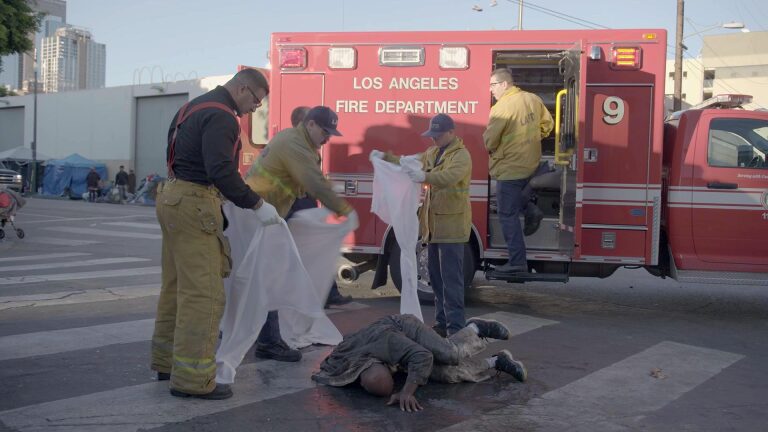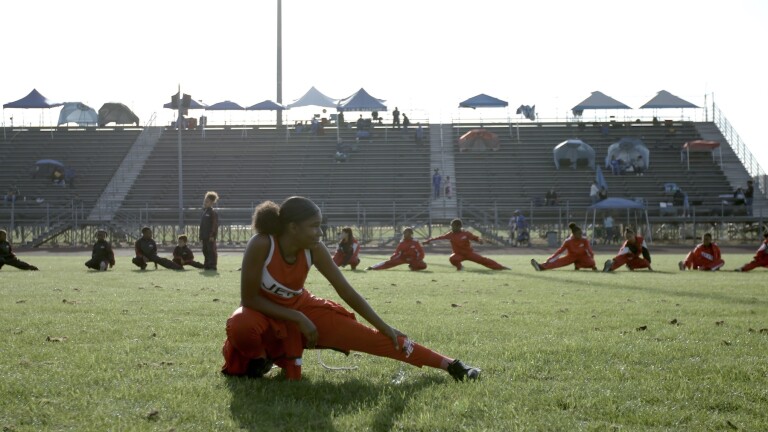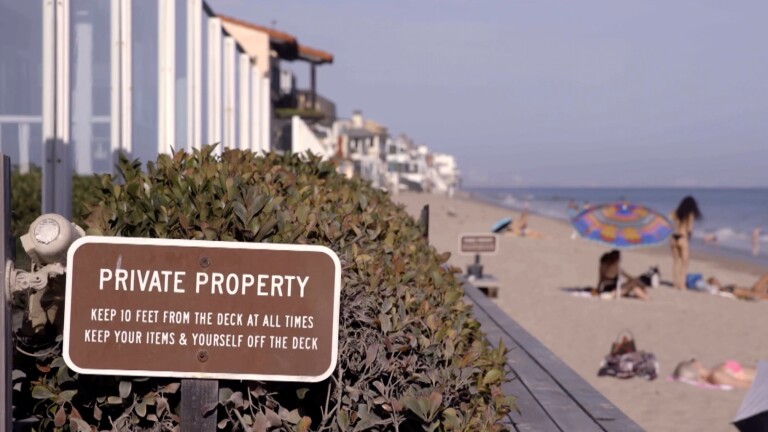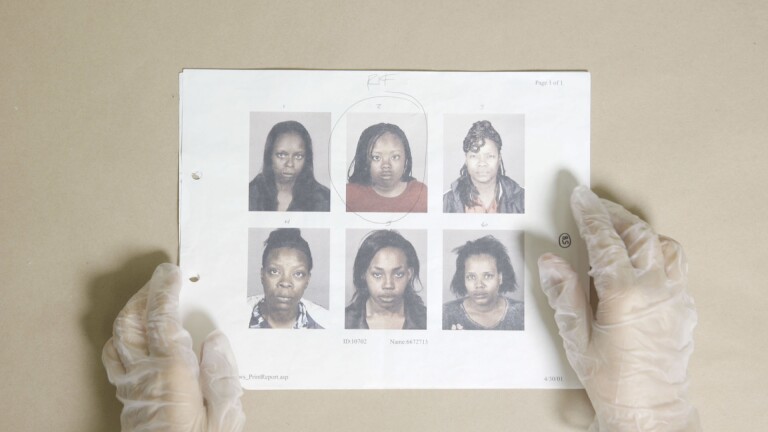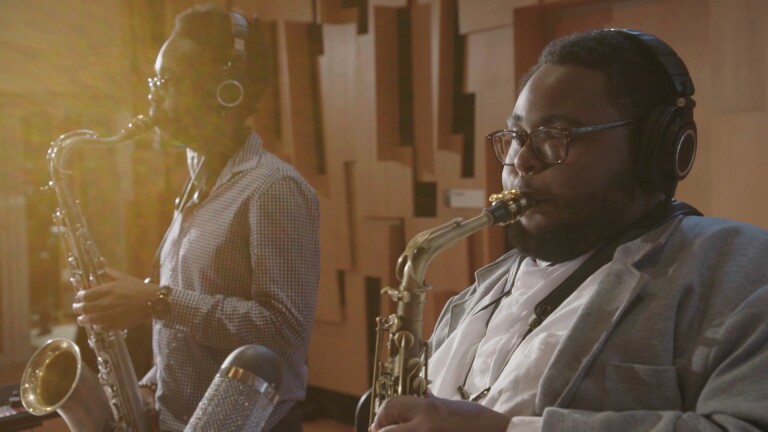America's Favorite Gun, AR-15, Flying Off Shelves Amid Fears of Ban
Some call it the most wanted gun in America, and in some ways, it's at the heart of the gun control debate -- the AR-15.
It has the look and feel of a military assault rifle. Ever since the Sandy Hook shootings, the AR-15 has been flying out of gun shops at premium prices. Buyers are afraid new laws will put the AR-15 out of reach. California already has restrictions on it. But as Brian Rooney found out, it's hard to stop people who must have their weapon of choice.
TRANSCRIPT:
Brian Rooney/Reporter: Amid the noise about gun control are the millions of Americans who love guns and love to shoot -- in particular, the AR-15 semi-automatic rifle. Harry Kasbarian makes AR-15 rifles under the name Global Arms in Glendale.
Kasbarian: Semi-automatic weapons are, to me, a sports gun. Okay, I love going target shooting. I love seeing a person shoot one of our guns. You see this million dollar smile on a person's face because they have the ability to own a weapon like this. I mean, it's the greatest feeling when you go to a shooting range. It's the greatest feeling.
Rooney: The AR-15 is the civilian version of the M-16 fully automatic assault rifle introduced to the military during the Vietnam War. It looks and operates like the military rifle, except that it requires one pull of the trigger for each bullet.
But 10 recent mass shootings in which the AR-15 was the primary weapon have reignited the debate over civilian ownership of guns like this. Is it a sporting gun or a military rifle? Many proponents say the AR-15 is not even an assault rifle and that a real soldier wouldn't want it in combat.
Kasbarian: A military style gun has the ability to fire three-round bursts, which is full automatic capability.
Rooney [to Kasbarian]: So none of these civilian ARs that are one pull for each bullet are assault rifles to you?
Kasbarian: No.
Rooney: No matter what it looks like, no matter what it's capable of doing.
Kasbarian: No.
Rooney: These semi-automatics used to be sold as "assault rifles." Here's a magazine cover from 1986. Now, as part of the industry's effort to preserve the right to own these guns, they are called "tactical rifles" or "sporting arms." Gun journals today play up the military specifications of the rifles, but don't call them "assault rifles."
Tom Diaz/Author: You can call them anything you want. You can call them bean poles for all I care, but they are designed to kill and injure large numbers of people with attachable high-capacity magazines.
Rooney: Tom Diaz is a leading authority on guns and author of the forthcoming book, "The Last Gun." He says the gun industry feeds the warrior fantasy of the AR-15, and the feeling of powerlessness some people have.
Diaz: What the gun industry does is ruthlessly drive all of these factors, the kind of "warrior within" feeling, the kind of fear of others, the kind of "I need the nicest toy."
The gun industry drives these factors to sell these guns.
Rooney: Don Zappone owns a gun shop in Orange County.
Rooney [to Zappone]: What is the basic attraction of these guns? Why do people buy them?
Don Zappone: Because it's one of the most customizable rifles ever made. There are more after-market accessories made for the AR-15 and AR-15 clones than for any rifle in the market.
Rooney [to Zappone]: To do what with it?
Zappone: To customize it and add features.
Rooney: Collapsible stocks, folding stocks, sights and combat flashlights. One of the features you can add -- this is not legal in California -- is a sliding stock that uses the recoil to allow a semi-automatic to fire, like this, just like a machine gun.
Part of the enjoyment of users of these guns is being able to fire lots of bullets quickly. Gun lovers hate restrictions on magazine size and speed of replacement.
Rooney [to Kasbarian]: Honestly speaking about the mechanics, like say reloading bullet by bullet, you have these guns, you like them, they're fun?
Kasbarian: Very fun.
Rooney [to Kasbarian]: That kind of thing takes the fun out of it?
Kasbarian: Yes, it does. It does. It truly does. It ruins everything. It ruins our industry in the gun business.
Rooney: Some owners may debate the description, but the AR-15 is generally considered an assault rifle and falls under the tightest restrictions of California's gun laws.
After the 1989 Stockton shooting, in which five children were killed and 29 were injured, the state enacted some of the toughest gun laws in the country. But Californians have found that some of the strictest regulations can have loopholes. Take California's ban on magazines that can be detached by the flick of a thumb. Instead, you have to use a tool. And here's just one example of how difficult it is to make laws about guns. Consider what is known as "the bullet button."
Zappone: Anywhere else in the country, outside of California, you would just put your thumb magazine release to take the magazine out and that would be a detachable magazine, but in California that's illegal.
Rooney: What tool do you have to use to get that out?
Zappone: Well, you could use a screwdriver, you have to push it in there, or you can use the tip of a cartridge or bullet. That's how it got the name "the bullet button."
Rooney: The intent of the non-detachable magazine is to slow down a gunman on a murder spree. The bullet button is designed to speed things up again for owners who like rapid-fire shooting.
Zappone: The bullet button was devised by the people who wanted AR-15 clones. The state said you couldn't have it, and so they looked at the law and figured out that, okay, well, we have to have one with a fixed magazine and that's what we have to do. This is a way to obey the law, and still have the rifle.
Rooney: State Senator Leland Yee from San Francisco has introduced a bill to eliminate the bullet button and other devices that make it easy to replace a magazine.
Leland Yee: So, if it requires you to remove parts of the guns in order to dislodge that magazine, if it requires you to do a top load, one bullet at a time, then we are fine.
Rooney: Gun enthusiasts are terrified that they will no longer be able to buy the rapid-fire, quick-loading AR-15.
Gun owner: If we're not careful and they politicize this, these guns that are respected and they take them from us, Lord help what kind of country we'll be. We would be a third-world country.
Rooney: Since the Newtown school massacre in Connecticut and the renewed political drive for gun control, the gun shops have all but emptied. You can't find an AR-15 for sale.
Zappone: Lines out the door, people waiting for hours, phone ringing off the hook. I had to finally stop answering the phone because we couldn't keep up with it.
Brian: And you sold out? What percent of your stock, of all kinds of weapons?
Zappone: One hundred percent of all of my tactical-style rifles. Everything. It's all gone, other than a few consignment things that I still have left. And probably 75 to 80 percent of my handguns are gone too.
Rooney: Harry Kasbarian is making more, but right now he's sold out, too.
Rooney [to Kasbarian]: If civilians can no longer buy these things, what happens to your business?
Kasbarian: It drops down a $3 million business a year to nothing.
Rooney: You'd be out of business.
Kasbarian: I'd be out of business.
Rooney: The industry is facing heavy fire from legislators looking to stop mass shootings. U.S. Sen. Dianne Feinstein recently introduced a bill to ban the manufacture, importation, and sale -- even giving -- of 158 specific guns she considers assault rifles, including rifles with a bullet button.
Feinstein: No weapon will be taken from anyone. The purpose is to dry up the supply of these weapons over time.
Rooney: Diaz believes the old assault weapon ban, backed by Feinstein, was not effective because it focused too much on military-style bells and whistles rather than the basic purpose of the gun.
Diaz: The question of bayonet mounts and flash hiders and all this business -- that was unfortunately incorporated into the 1994 federal semi-automatic assault weapons ban. And it had virtually nothing to do with the actual functioning of an assault rifle, and that's why that ban was so spectacularly unsuccessful.
Rooney: And go back for a moment to California's fixed magazine. Leland Yee's proposal to ban the bullet button targets just one feature.
Yee: One of the difficulties for all of us is that it's hard to predict the ingenuity of those individuals who want to skirt the law. We are always going to unfortunately play a little catch-up.
Rooney: Short of suspending the Second-Amendment right to own guns, many gun owners believe there will always be a way to own the guns they want. This man buys guns and parts and isn't deterred by current regulations.
Customer: I don't foresee any way to really put a stop to it, and that's essentially the fight of the Second Amendment at the moment.
Rooney: Tom Diaz says that to make a difference, it would take sweeping action never tried before.
Diaz: We've had the incremental approach for nigh on to 20 years -- at least, certainly since 1994. And the argument has always been, "Well, something is better than nothing." "We need to win today to fight another battle." The problem is, we never fight another battle. And most of the time, we don't even win today. Some people are gonna have to use the phrase "man up," and stop using gun control as a kind of political token and really mean what they say.
Sen. Lindsey Graham [Senate hearing footage]: Does everybody on the panel agree that a convicted felon should not have either one of those guns?
Rooney: Hearings are only beginning, but have already lined up the gun lobby on one side...
Wayne La Pierre [Senate hearing footage]: Law-abiding gun owners will not accept blame for the acts of violent or deranged criminals.
Rooney: ...victims and survivors on the other.
Gabby Giffords [Senate hearing footage]: Too many children are dying. Too many children.
Rooney: From Sacramento to Washington, 2013 is shaping up to be the year of a national legislative battle over guns.

